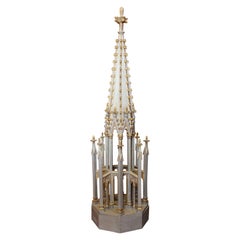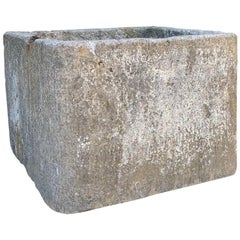French Sandstone Sundial
Antique Late 18th Century French Neoclassical Sundials
Sandstone
People Also Browsed
Antique 19th Century French Gothic Revival Architectural Elements
Wood, Giltwood
Antique Early 19th Century Belgian Garden Ornaments
Granite
Antique 16th Century French Renaissance Figurative Sculptures
Sandstone
Antique 1780s Italian Baroque Wall Mirrors
Walnut
Antique 17th Century French Louis XIII Canapes
Walnut
Antique Early 19th Century French Empire Bookcases
Walnut
21st Century and Contemporary Portuguese Organic Modern Center Tables
Travertine
20th Century Cubist Figurative Prints
Linocut
Antique Late 17th Century French Baroque Architectural Elements
Sandstone
2010s Sofa Tables
Walnut
17th Century Baroque Landscape Paintings
Oil, Canvas
Antique Early 19th Century French Empire Historical Memorabilia
Crystal, Silver
2010s Belgian Coffee and Cocktail Tables
Iron
Antique 18th Century and Earlier French Louis XIV Panelling
Oak, Wood
Antique Early 18th Century French Fireplace Tools and Chimney Pots
Stone
Antique Early 18th Century Italian Side Tables
Walnut
A Close Look at neoclassical Furniture
Neoclassical design emerged in Europe in the 1750s, as the Age of Enlightenment reached full flower. Neoclassical furniture took its cues from the styles of ancient Rome and Athens: symmetrical, ordered, dignified forms with such details as tapered and fluted chair and table legs, backrest finials and scrolled arms.
Over a period of some 20 years, first in France and later in Britain, neoclassical design — also known as Louis XVI, or Louis Seize — would supersede the lithe and curvaceous Rococo or Louis XV style.
The first half of the 18th century had seen a rebirth of interest in classical antiquity. The "Grand Tour" of Europe, codified as a part of the proper education of a patrician gentleman, included an extended visit to Rome. Some ventured further, to sketch the ruins of ancient Greece. These drawings and others — particularly those derived from the surprising and rich archaeological discoveries in the 1730s and ’40s at the sites of the Roman cities of Pompeii and Herculaneum — caused great excitement among intellectuals and aesthetes alike.
Neoclassical furniture is meant to reflect both grace and power. The overall appearance of neoclassical chairs, tables and cabinetry is strong and rectilinear. These pieces are, in effect, classical architecture in miniature: chair and table legs are shaped like columns; cabinets are constructed with elements that mirror friezes and pediments.
Yet neoclassicism is enlivened by gilt and silver leaf, marquetry, and carved and applied ornamental motifs based on Greek and Roman sculpture: acanthus leaves, garlands, laurel wreaths, sheaves of arrow, medallions and chair splats are carved in the shapes of lyres and urns. Ormolu — or elaborate bronze gilding — was essential to French design in the 18th and 19th centuries as a cornerstone of the neoclassical and Empire styles.
As you can see from the furniture on these pages, there is a bit of whimsy in such stately pieces — a touch of lightness that will always keep neoclassicism fresh.
Find antique neoclassical furniture today on 1stDibs.
Finding the Right sundials for You
Although typically decorative, antique and vintage sundials transport a guest in your home to a different era, their simple function a tether to the ancient world.
Humans have tracked time since the dawn of civilization. Before the invention of precise mechanical clocks, various materials including water and incense were used to mark the passage of time. The sundial was one of the earliest of these timekeeping devices.
The oldest known sundial dates back to 1,500 B.C. in Egypt. The very first sundials were simple stone blocks with markings and a vertical needle of wood or metal to indicate the hours with its shadow. Later Greek sundials had a gnomon parallel to the axis of the Earth. Some flat sundials from the Islamic world were directional objects for pointing the way to Mecca.
Mechanical clocks use a series of gears and springs to track time precisely; sundials rely on light and shadow. As sunlight crosses over a sundial, it casts a shadow that moves across the face of the dial as the Earth rotates.
There are now more accurate, easier and probably cooler ways to tell time, yet the sundial persists. It is not uncommon to find flat stone sundials among an assemblage of decorative elements in colorful gardens and standing sundials in expertly appointed outdoor spaces.
While garden sundials are among the most popular sundials today, sundials made of metal, stone, bronze and more can be found on 1stDibs to match any taste or setting. The collection also includes sundials of Scandinavian, British and North American origins.


